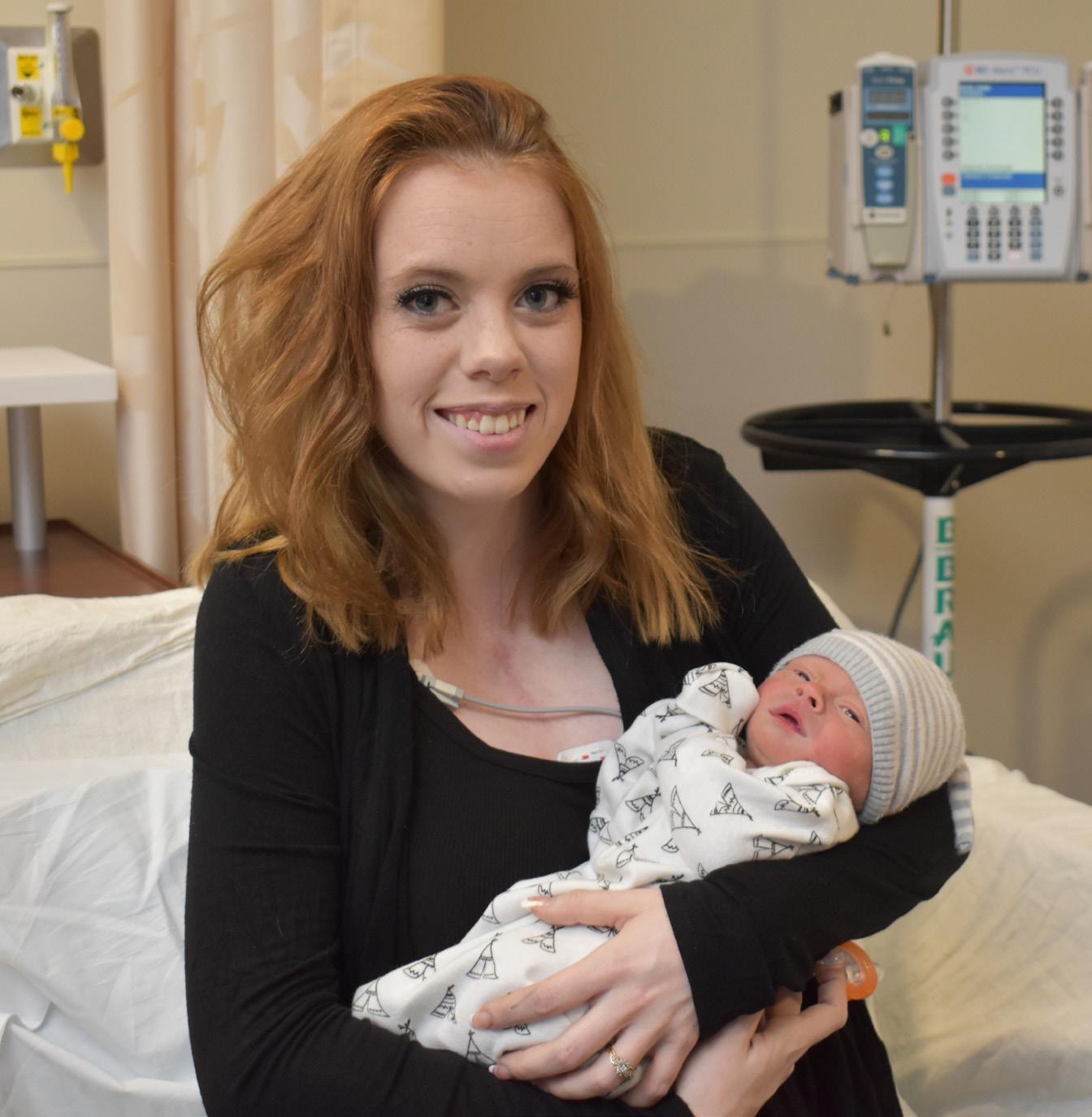
4 minute read
HEART DEFECTS IN BABIES: Johns
GUEST EDITOR HEART DEFECTS IN BABIES: What to Know
by Johns Hopkins All Children’s Hospital Staff, photo provided by Johns Hopkins All Children's Hospital
Pregnancy can often be a roller coaster of emotions for families, especially for mom. There’s the excitement of welcoming a new baby, but for some, fear and anxiety set in around the 20-week appointment. This is when your OB performs an anatomy scan. They scan the baby from head to toe via an ultrasound, and some families (about 1% of all pregnancies) find out there may be a problem with the heart, which is called a congenital heart defect or CHD.
WHAT IS A CONGENITAL HEART DEFECT AND WHAT CAUSES IT?
CHD refers to defects in the heart or blood vessels around the heart that don’t develop normally, ultimately affecting blood flow, breathing, activity levels and feeding. While genetics, diet, environmental factors or all the above can be a cause for heart defects in unborn babies, often there’s no known reason why some babies are more at risk of heart defects than others.
While some expectant moms get genetic tests done around the 12-week mark to identify any issues, the 20-week pregnancy appointment takes a closer look at the heart’s four chambers and surrounding vessels, picking up roughly 85 percent of heart disease and abnormalities, says Michael Puchalski, M.D., medical director of pediatric cardiology and co-director of the Johns Hopkins All Children’s Heart Institute.
“As parents, when you hear ‘there might be a problem’ in this visit, there can be a lot of anxiety, and information can be hard to process,” Dr. Puchalski says. “Our suggestion is to get seen as soon as possible by a fetal cardiologist to learn more about your baby’s condition. It’s important to know the facts and also understand that many babies can do well after being born with CHD.” Johns Hopkins All Children’s Fetal Heart program brings together a team of experts who meet with families early on to diagnose CHD, discuss potential surgical interventions after birth, review delivery options and help coordinate care both before and after birth. Delivery at a specialty center like Johns Hopkins All Children’s allows mom and baby to be in the same hospital, decreasing the time to optimal care and providing the best possible outcomes. Programs like this treat a wide variety of heart conditions and help families learn about CHD and how to care for them, including some of the most common defects.
SOME OF THE MOST COMMON DEFECTS:
“HOLE IN THE HEART” OR VENTRICULAR SEPTAL DEFECT (VSD)
This is one of the most common defects, characterized by a hole in the lower two chambers of the heart, which can increase blood flow to the lungs and affect feeding and breathing. Sometimes your baby may not need surgery right away or in some cases, not at all. If the baby is eating well and takes a normal amount of time to eat, then they will likely be followed by a cardiologist to see if the hole closes on its own or if surgery is required later on.
SINGLE VENTRICLE
Instead of two lower pumping chambers, only one chamber—or ventricle—works to pump blood. This causes a number of problems including cyanosis (bluish discoloration of the skin, lips, nailbeds) and shortens life expectancy. Once baby is born, several surgeries are usually required to re-route blood to the lungs and/ or body. The most common of these defects is hypoplastic left heart syndrome or HLHS. All of these conditions may require a heart transplant later in life.
AORTIC STENOSIS
This condition consists of a narrowing of the aortic valve that affects blood flow to the brain and body. Some mild cases may not need treatment, while more serious cases will require surgery to repair/replace the valve and improve blood flow. A cardiac catherization (a thin tube inserted through the leg/groin) can also help doctors treat aortic stenosis in some situations to delay or prevent surgery.
ATRIOVENTRICULAR CANAL
This occurs when only one valve persists inside the heart instead of two. The heart has complete mixing of oxygen-rich blood with oxygen-poor blood through a hole in the upper and lower chambers of the heart. There is cyanosis and heart failure, which leads to difficulty breathing and failure to gain weight. This is the most common condition in Down Syndrome children and typically requires repair around 4-6 months of life.
TETRALOGY OF FALLOT (TOF)
This condition is made up of four defects affecting the function of the heart centered around narrowing of the pulmonary valve or flow of blood to the lungs. If untreated, babies can have low oxygen levels and turn blue, especially when they cry (the so-called Tet spell). Surgery is required either after birth or around 4-6 months to complete a full repair to improve blood flow.
TREATMENT AND PLANNING FOR THE FUTURE











